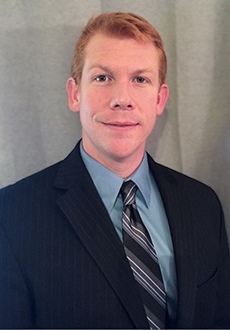The OAR ORTA UxSRTO is no longer operating.
For further information, please visit The Office of Marine and Aviation Operations (OMAO) Uncrewed Systems Program webpage.
John R. Walker

Atmospheric Scientist
A big weather enthusiast (aka: “weather weenie”) from a very young age, John attended school at Mississippi State University to obtain a B.S. degree in “Geosciences” and “Broadcast Meteorology”. After graduating from MSU in 2004, John’s interests then turned more toward operational meteorology and forecasting, with a desire to some day go to work for the National Weather Service (NWS). While volunteering for the NWS and attending the University of South Alabama in Mobile, where he obtained a B.S. degree in “Operational Meteorology”, John worked as an undergraduate research assistant in the Meteorology Department. With a newly discovered interest in research, this path led him to attend the University of Alabama in Huntsville, where he earned a M.S. degree in “Atmospheric Science” while working as a Graduate Research Assistant. During that time, he pursued a research focus utilizing satellite and other remote sensing datasets of the land surface to diagnose secondary forcing mechanisms to assist in forecasting the location and development of summer time thunderstorms (i.e., “convective initiation”) several hours in advance.
Following graduate school, John worked as a Research Associate at the University of Alabama in Huntsville, focusing on various research to operations (“R2O”) applications and contributing as a member of the NOAA GOES-R Satellite Algorithm Working Group. Some of the products he helped to develop here were used experimentally in a variety of NWS offices around the country, receiving positive feedback, and the university obtained a patent for one of them, officially listing John as an inventor.
Next, John worked as a consultant meteorologist through the Von Braun Center for Science and Innovation (VCSI) on the “Arctic Collaborative Environment” (ACE) project, which is a Joint Capability Technology Demonstration (JCTD) initiative used to create an internet-based, open-access, Arctic-focused, environmental research and decision support system that integrates data from existing remote sensing assets. Following this, he went to work for NASA’s Marshall Space Flight Center in Huntsville, AL as a contractor in the Natural Environments branch (EV44). Here, he helped in addressing the atmospheric support needs of several other NASA branches and assisted with the development of NASA’s new heavy-lift Space Launch System (SLS) rocket.
John now works for Cherokee Nation Technologies (CNT) as a contractor supporting NOAA’s Uncrewed Systems Research Transition Office (UxSRTO) Program in the Office of Oceanic and Atmospheric Research (OAR). At this post, he works as a member of the Science Assessment team, leveraging previous experience in R2O applications to help identify areas of need in NOAA in which USRTO may help to fill data gaps and perform tasks more cheaply and/or more safely. From high-altitude, long endurance unmanned systems, all the way down to the very small, low-altitude, short endurance vehicles, John’s primary tasks involve the determination of observational requirements from potential users of UxSRTO-based data, followed by the proper pairing of sensors and UxSRTO platforms to accomplish a given objective. These efforts extend well beyond atmospheric observations for high-impact weather events, also encompassing a great variety of NOAA’s observational needs in the marine and polar domains, as well.
